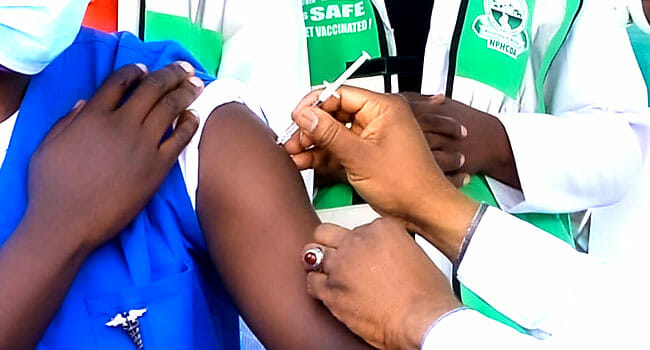The National Primary Health Care Development Agency has said that over 64 million eligible persons in Nigeria targeted for the COVID-19 vaccination had been fully vaccinated.
According to the NPHCDA, this percentage represents 55.3 percent of the target population.
Additionally, it stated that over 76 million Nigerians, or 65.7% of the target population, had received at least one dose of the COVID-19 vaccine.
At the Federal Ministry of Health ministerial press briefing on COVID-19 and other developments in the health sector on Monday in Abuja, the NPHCDA made this announcement.
Dr. Faisal Shuaib, Executive Director/Chief Executive Officer, said during the briefing that the agency is collaborating with stakeholders to raise awareness, mobilise the community, and increase COVID-19 vaccination rates.
Dr Shuaib, who was represented by Dr Garuba Bulama at the agency said “The fight against COVID-19 is not over. Three years after the coronavirus emerged, a new variant, XBB.1.5 is quickly becoming the dominant strain in parts of the United States and has been detected in at least 28 other countries, according to the World Health Organisation. It is because of a potent mix of mutations that makes it easier to spread broadly. XBB.1.5 has been pegged by the WHO as the most transmissible descendant yet of the omicron variant.
“While accounting for one per cent of all COVID-19 cases at the start of December, estimates from the US Centre for Disease Control and Prevention show that it surged to become the dominant strain by the end of the month, responsible for about 41 per cent of all infections. In northeastern states, that figure has jumped above 70 per cent.
“The increase in the number of cases seen globally is a result of the mutation that is occurring and the low intake of booster doses.
“We are therefore calling on Nigerians to ensure that they take their booster doses of the COVID-19 vaccines. Just like the flu vaccine, the COVID-19 vaccines have become routinised vaccines that help protect us against this deadly virus.”
The agency added that it will continue to work with states and partners to ensure that low-performing states are pushed to ensure full coverage of all eligible populations.
